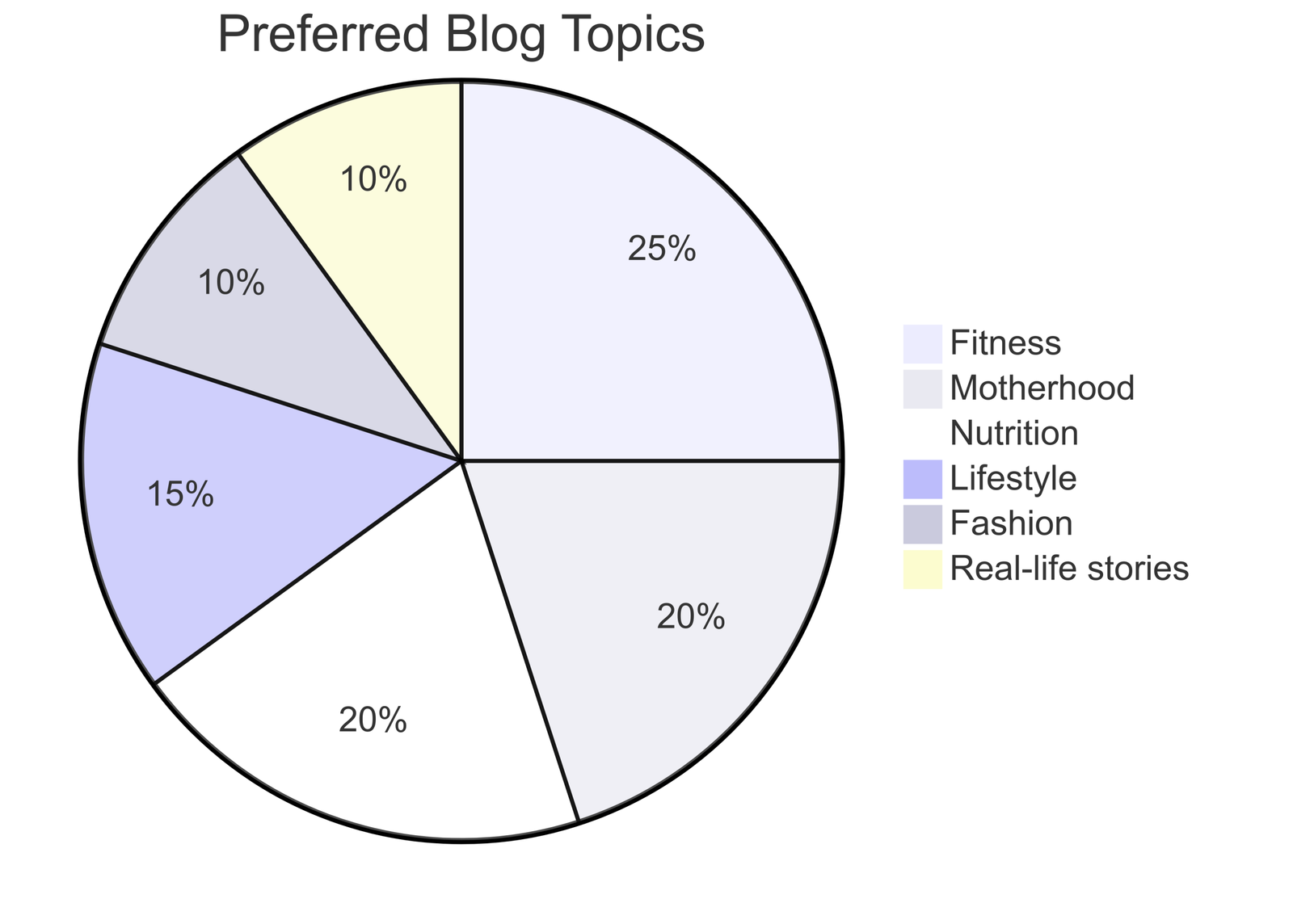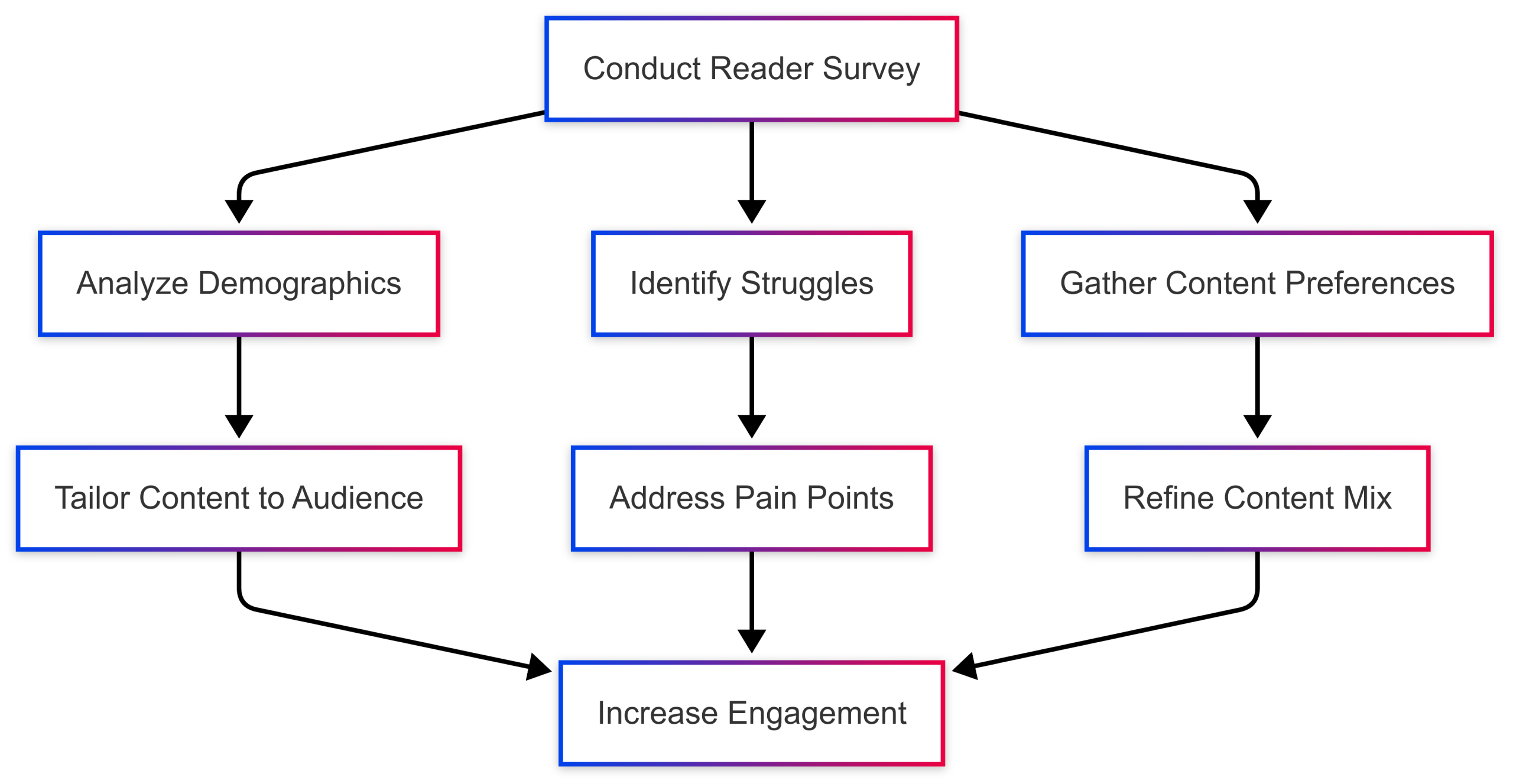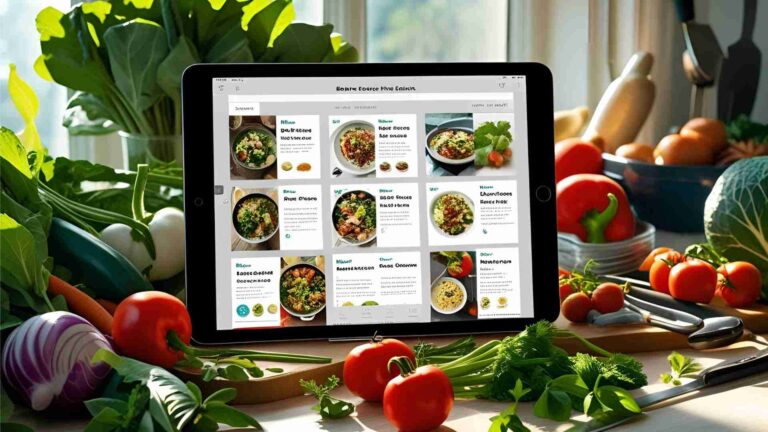Blog-reader survey results and the why behind what’s on the blog
Blogging is a dynamic endeavor that thrives on the connection between the writer and the audience. To create content that resonates, bloggers must understand their readers’ preferences, struggles, and aspirations. Reader surveys are a powerful tool for gaining these insights, offering a window into the audience’s world and guiding content strategy. This article delves into the results of a comprehensive blog reader survey, exploring who the readers are, what challenges they face, what content they crave, and why certain topics appear on the blog. By analyzing these findings, we aim to provide actionable insights for bloggers and content creators looking to strengthen their audience connection.
Why Conduct a Reader Survey?
Reader surveys are more than just a feedback mechanism; they are a strategic asset for blog improvement and audience engagement. Here are the key benefits:
- Blog Improvement: Surveys reveal what readers love and what they want changed, enabling bloggers to refine content, design, and features.
- Reader Participation: Inviting feedback makes readers feel valued, fostering a sense of ownership and community.
- Strategic Decision-Making: Surveys help test ideas for new content, products, or services, ensuring alignment with audience needs.
- Audience Insight: Understanding demographics and preferences allows bloggers to tailor content to their core readership.
Surveys also counteract the one-way nature of blogging, where content is often published without direct reader interaction. By soliciting feedback, bloggers can transform passive readers into active participants, strengthening the blog’s community.
Methodology: How the Survey Was Conducted
To ensure meaningful results, the survey was designed with best practices in mind:
- Platform: The survey was hosted on SurveyMonkey, chosen for its user-friendly interface and robust analytics. A paid plan ($24/month) was used to accommodate more than 10 questions and over 100 responses.
- Question Design: A mix of closed-ended (multiple-choice, rating) and open-ended questions was used. Closed-ended questions facilitated quick responses and easy analysis, while open-ended questions provided deeper insights. Questions were worded neutrally to avoid bias (e.g., “How often do you read blog posts?” instead of “Do you love reading our posts?”).
- Distribution: The survey was embedded in a blog post for easy access, promoted via social media (Twitter, Facebook), and mentioned in newsletters. No incentives were offered to ensure responses came from genuine readers.
- Response Rate: Approximately 50% of regular readers participated, estimated based on average post engagement. The survey ran for one week, yielding 550 responses.
The data was analyzed using SurveyMonkey’s built-in charts and exported to Excel for further review. Key findings were visualized in an infographic to share with readers.
Who Are the Readers?
Understanding the audience is the foundation of effective content creation. The survey provided a clear picture of the blog’s readership:
| Demographic | Percentage |
|---|---|
| Age: 25–34 | 40% |
| Age: 35–44 | 30% |
| Age: 45–54 | 15% |
| Age: 55+ | 10% |
| Age: 18–24 | 5% |
| Employment: Full-time | 65% |
| Employment: Part-time | 20% |
| Employment: Not employed | 15% |
| Parental Status: Parents | 55% |
| Parental Status: Non-parents | 45% |
Key Insights:
- The majority (70%) are aged 25–44, indicating a young to middle-aged audience.
- Most readers (65%) work full-time, suggesting they juggle busy schedules.
- Over half (55%) are parents, pointing to a significant segment managing family responsibilities.
Additionally, 50% of respondents read every blog post, highlighting a loyal core audience. These demographics confirm the blog’s appeal to busy professionals and parents seeking practical lifestyle advice.
What Are Readers Struggling With?
One of the survey’s most revealing questions was, “What are you struggling with right now?” The open-ended responses highlighted common pain points:
| Struggle | Percentage of Mentions |
|---|---|
| Time management | 30% |
| Balancing work, motherhood, and self-care | 25% |
| Consistent fitness routine or rest | 20% |
| Healthy eating and family nutrition | 15% |
| Sleep deprivation | 10% |
| Stress and overwhelm | 8% |
| Guilt over lifestyle choices | 7% |
Notable Comments:
- “I work too much and feel guilty when I take downtime instead of exercising.” This reflects the societal pressure to always be productive.
- “I’m very Type-A and struggle to be flexible without feeling guilty.” This highlights the challenge of rigid routines among perfectionists.
These struggles resonate universally, particularly among the blog’s core demographic of working parents. They underscore the need for content that addresses practical solutions for time management, self-care, and mental health.
What Content Do Readers Want?
Readers were asked, “What topics would you like to see more of on the blog?” The results affirmed the blog’s existing content mix while suggesting areas for expansion:

Key Findings:
- Fitness (25%): Readers value fitness content, particularly posts about Les Mills workouts, which attract a dedicated subset of the audience.
- Motherhood and Nutrition (20% each): These topics resonate with parents seeking advice on family life and healthy eating.
- Lifestyle and Fashion (15% and 10%): Readers appreciate a mix of practical and aspirational content.
- Real-life Stories (10%): Authentic, relatable posts foster a deeper connection.
Interestingly, some readers expressed conflicting preferences. For example, while Les Mills content is popular among fitness enthusiasts, others found it irrelevant. Similarly, Beautycounter posts (about clean skincare) were divisive, with some readers feeling they were too sales-focused, while others valued the recommendations.
The Why Behind the Blog’s Content
The blog’s content is a deliberate blend of passion, audience interest, and strategic growth. Here’s why certain topics are featured:
Fitness (e.g., Les Mills)
- Rationale: The blogger is a fitness professional and Les Mills instructor, making this a core passion. Les Mills posts perform well in search engine rankings and attract a loyal audience segment. The brand partnership also supports the blog’s revenue.
- Reader Feedback: While some readers skip these posts, they remain a staple due to their popularity and alignment with the blogger’s expertise.
- Future Plans: Continue covering Les Mills sparingly, ensuring variety to cater to non-fitness readers.
Beautycounter and Skincare
- Rationale: The blogger uses Beautycounter products daily and earns income through affiliate sales. These posts reflect authentic lifestyle choices and appeal to readers interested in clean beauty.
- Reader Feedback: Some readers find this content excessive, while others are active clients. The criticism highlights the need for balance to avoid alienating readers.
- Future Plans: Reduce frequency of Beautycounter posts and integrate them more subtly into lifestyle content.
Motherhood, Nutrition, and Lifestyle
- Rationale: These topics align with the audience’s demographics and struggles, offering practical solutions and relatability. They also foster community engagement.
- Reader Feedback: Readers overwhelmingly support this mix, appreciating the balance of practical advice and personal stories.
- Future Plans: Increase posts on time management, self-care, and flexibility, addressing key reader pain points.
Balancing Authenticity and Growth
The blog avoids niching down to a single topic (e.g., only fitness or recipes) to maintain authenticity and appeal to a broad audience. While niching can accelerate growth, the blogger prioritizes variety to reflect real life. This approach resonates with readers who value the “mixed bag” of topics, as evidenced by comments like, “I like that you cover food, lifestyle, family, fitness, skincare, books, etc.”
Addressing Reader Feedback
The survey elicited hundreds of comments, ranging from praise to constructive criticism. Here are key themes and responses:
On Authenticity
- Comment: “You are authentic and joyful to read. You come across as a real person, not someone who does everything for the Gram.”
- Response: Authenticity is the blog’s cornerstone. The blogger avoids over-curated content, prioritizing presence in real life over excessive social media posting. This resonates with readers who value genuine voices.
On Appearance
- Comment: “I’d love to see more photos of you not ‘made up’ (makeup-free, hair not done).”
- Response: The blogger was surprised by this perception, as real-life appearances are often casual. However, blog photos tend to be more polished. Future posts will include more natural images to reflect everyday life.
On Accessibility
- Comment: “Your posts no longer show up on Bloglovin’, and I can’t see missed posts easily.”
- Response: Technical issues with Bloglovin’ are beyond the blogger’s control. Readers are encouraged to subscribe to email newsletters for reliable updates. The blog’s feed (https://aladygoeswest.com/feed) can be used with RSS readers like Feedly.
On Sponsored Content
- Comment: “The Beautycounter content can be excessive. Don’t enjoy being sold to.”
- Response: Sponsored posts, including Beautycounter, are part of the blog’s income stream but are always authentic. The blogger will reduce their frequency and ensure transparency to maintain trust.
On Writing Quality
- Comment: “Your posts are always so detailed, and I truly love reading your writing.”
- Response: Writing is the blogger’s strength, and reader appreciation reinforces the focus on high-quality, engaging content. The consistent schedule of two posts per week balances quality with the blogger’s responsibilities as a mom and professional.
Strategic Implications for Content Creators
The survey results offer valuable lessons for bloggers and content creators:
- Know Your Audience: Regularly survey readers to understand their demographics, preferences, and pain points. This informs content that resonates.
- Balance Passion and Profit: Cover topics you love, but ensure they align with audience interests. Sponsored content should feel authentic to maintain trust.
- Embrace Feedback: Constructive criticism is a growth opportunity. Be open to critiques and use them to refine your strategy.
- Simplify Access: Ensure readers can easily find and follow your content through newsletters, RSS feeds, or social media.
- Visualize Data: Use charts and infographics to share survey results with readers, enhancing transparency and engagement.

This flowchart illustrates how survey insights drive content strategy and engagement.
Tools for Conducting Surveys
To replicate this approach, consider these survey tools:
| Tool | Pricing | Features |
|---|---|---|
| SurveyMonkey | Free (≤10 questions, 100 responses); $24/month for more | User-friendly, robust analytics, charts, Excel export |
| Google Forms | Free | Simple interface, good for basic surveys, integrates with Google Sheets |
| Typeform | Free (limited); $35/month | Interactive, visually appealing, good for engaging surveys |
Recommendation: SurveyMonkey is ideal for detailed surveys with analytics needs, while Google Forms suits budget-conscious bloggers.
Future Content Plans
Based on the survey, the blog will evolve as follows:
- New Topics: Posts on time management, flexibility, and self-care to address reader struggles.
- Content Mix: Maintain variety (fitness, motherhood, nutrition, lifestyle) with occasional fashion and real-life stories.
- Reduced Sponsored Posts: Limit Beautycounter content to maintain authenticity and reader trust.
- More Natural Imagery: Include candid photos to reflect everyday life.
- Email Focus: Encourage newsletter signups to ensure readers don’t miss posts.
A “What I Eat in a Day” post is planned to meet reader requests for nutrition content.
Conclusion
Reader surveys are a vital tool for bloggers seeking to create meaningful, impactful content. By understanding who their readers are, what they struggle with, and what they want, bloggers can craft a content strategy that resonates deeply. This survey revealed a loyal audience of busy parents and professionals who value authentic, varied content that addresses their real-life challenges. While some topics, like fitness and sponsored posts, spark mixed reactions, the blog’s commitment to authenticity and quality writing ensures a strong connection with readers. For bloggers everywhere, the lesson is clear: listen to your audience, act on their feedback, and let their voices shape your journey.
Call to Action: Have you conducted a reader survey for your blog? Share your experiences in the comments or email us. If you’re a reader, sign up for our newsletter to stay updated and share your thoughts on future content!
Please share this Blog-reader survey results and the why behind what’s on the blog with your friends and do a comment below about your feedback.
We will meet you on next article.
Until you can read, Evergreen Content Ideas For Food Bloggers







The blog post titled “Reader Survey Results and the Why Behind What’s on the Blog” offers an insightful look into the preferences and interests of its audience. It effectively highlights the topics that resonate most with readers, such as health, family, and fitness, providing valuable information for content creators aiming to engage their audience more effectively.
Insightful and honest! The survey results clearly reflect the readers’ interests, and it’s great to see how content is shaped around real feedback. Makes the blog feel more personal and genuinely in tune with its audience.
The blog post offers a transparent look into the author’s content strategy, shaped by reader feedback. It highlights a commitment to aligning blog topics with audience interests, fostering a more engaging and relevant reading experience.